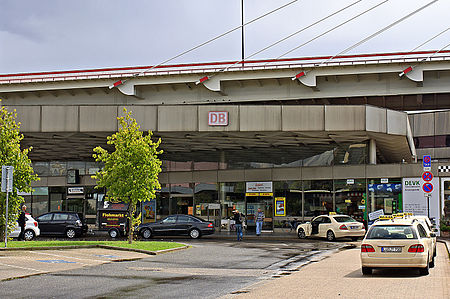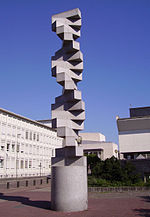Ludwigshafen (Rhein) Hauptbahnhof
1847 establishments in PrussiaBuildings and structures in LudwigshafenPages with no open date in Infobox stationRailway stations in Germany opened in 1847Railway stations in Rhineland-Palatinate ... and 1 more
Rhine-Neckar S-Bahn stations

Ludwigshafen (Rhein) Hauptbahnhof is a railway station at Ludwigshafen am Rhein in the German state of Rhineland-Palatinate. A combination of a wedge-shaped station and a two-level interchange, the station is at the junction on the lines from Mainz and Neustadt an der Weinstrasse to Mannheim. It is classified by Deutsche Bahn as a category 2 station. The Ludwigshafen station was built in 1847 as a terminal station in the centre of modern Ludwigshafen. The current station was built in 1969 to the west of the city centre, but has not proved to be a success due to its poor location.
Excerpt from the Wikipedia article Ludwigshafen (Rhein) Hauptbahnhof (License: CC BY-SA 3.0, Authors, Images).Ludwigshafen (Rhein) Hauptbahnhof
B 37, Ludwigshafen am Rhein Süd
Geographical coordinates (GPS) Address Nearby Places Show on map
Geographical coordinates (GPS)
| Latitude | Longitude |
|---|---|
| N 49.477777777778 ° | E 8.4341666666667 ° |
Address
Ludwigshafen (Rhein) Hbf Gleis 5/6
B 37
67059 Ludwigshafen am Rhein, Süd
Rhineland-Palatinate, Germany
Open on Google Maps









